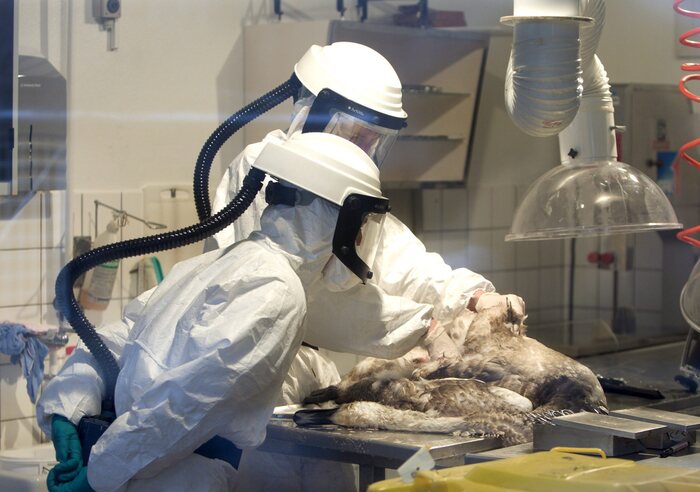Concern continues to grow around the world over the spread of avian influenza, fearing that it could become a real threat to humans too. The latest alert comes from the World Health Organization (WHO), which today expressed "enormous concern" over the growing spread of the H5N1 strain of avian influenza to new species, including humans. “It remains, I think, a big concern,” Jeremy Farrar, head of the U.N. health agency, said at a news conference in Geneva.
The fear, he explained, is that the H5N1 virus, which has demonstrated "an extraordinarily high mortality rate" in people infected through contact with infected animals, will adapt to become capable of human-to-human transmission.
There is currently no evidence of human-to-human transmission of the H5N1 virus. Between 2003 and April 1, 2024, the WHO said it recorded a total of 889 human cases of avian influenza in 23 countries, including 463 deaths, bringing the case fatality rate to 52%. At the beginning of April, American authorities announced that a person had tested positive for avian influenza after being infected by a dairy cow in Texas. Currently, cases of transmission to humans are very rare. A nine-year-old boy, carrier of the H5N1 strain, died from avian influenza in Cambodia in February, following three deaths in the same country in 2023. In the United States, the patient had shown "redness of the eyes (corresponding to conjunctivitis), as the only symptom,” authorities said, adding that he was isolated and treated with an antiviral drug used for influenza. When "you get into the mammal population, then you get closer to humans," Farrar said, warning that "this virus is just looking for new hosts. It's a real concern." Farrar therefore called for monitoring to be strengthened, warning that it is "very important to understand how many human infections are occurring, because that is where the adaptation of the virus will happen." He also said that efforts are underway to develop vaccines and therapies for H5N1 and stressed the need to ensure that regional and national health authorities around the world have the capacity to diagnose the virus, so that "if H5N1 reached humans, with human-to-human transmission, the world would be able to respond immediately,” he concluded, urging equitable access to vaccines, therapies and diagnostics.
In a recent report the European Center for Disease Prevention and Control (ECDC) and the European Food Safety Authority (EFSA) also expressed strong concern: "If the A/H5N1 avian influenza viruses acquired the ability to spread between human beings humans, large-scale transmission could occur." In the midst of the pandemic, in 2020, a new variant of the A/H5N1 virus (called 2.3.4.4b) also appeared and quickly became dominant. Since then, the "number of infections and transmission events between different animal species have increased," the report said. These continuous passages between animals and different species increase the opportunities in which the virus can mutate or acquire portions of other viruses that make it more suitable for infecting mammals. In reality A/H5N1 has already taken steps in this direction. It has learned to multiply more effectively in mammalian cells and to mislead certain components of the immune response. This has already allowed it to target a wide range of wild mammals and even companion animals, such as cats, in recent years.
Last, the case of the infected cow in the USA. In Italy, 11 new outbreaks of highly pathogenic avian influenza of the H5N1 subtype were confirmed in poultry farms in the period from the end of March 2023 to December 2023. In 2024, only one outbreak has been confirmed so far in the month of February.

